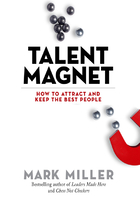The Power of Sharing
SOMETHING FUNDAMENTAL about change has not changed at all Stories still come first. Before any change happens, online or offline—before you get your phone banking, your petitions, your door knocking, your lobby days, your e-mail campaigns, your anything—change starts with stories. Our stories. Storytelling has been the most powerful building block for social change since the beginning of time—think about how long humans have been sitting around the campfire telling each other what's going on. Social networking gives us unprecedented power to share our stories with more people than we ever imagined.
What happens when you tell stories Two magical things You build trust with other people in your network, and from there you build empathy. Note that I'm not talking about sympathy. Sympathy is when you feel badly for people who have had something bad happen to them. Empathy is when you share the emotions that other people have and express. It's a powerful, deeply primal experience.
The trust we create on social networks fuels the empathetic response we have to one another, even if we don't know each other that well. All of us have stories, experiences, and opinions to share as foundations for the change we make in the world. As we'll see, sharing subverts our traditional notions of power around information, and it offers a must-seize occasion for democratization.
Welcome to the Future, or, The Birth of Sharing
In order to understand why sharing offers such a radical opportunity to create a better world, it's helpful to understand the origins of the World Wide Web. That history shows, pointedly, how the web's origin is a story not just about whizbang technology; it's more fundamentally about great human drive—the primal need to interact with people who have similar experiences, values, and goals.
Although the Internet has been around for 40 years,[1] it was largely the provenance of military researchers and academics until some Very Important Things happened. In early 1992, there were "26 reasonably reliable"[2] servers connected to one another, forming the World Wide Web. By late 1993, that number had grown to more than 200,[3] and a trifecta of events occurred within a few months of each other to send the WWW hurtling toward the mainstream
? A lot of users had been using something called Gopher, developed by the University of Minnesota, to share documents. The university made a very silly judgment call It decided to charge organizations that wanted to use this technology on their servers.[4] That decision caused server administrators to explore other free options; the World Wide Web, just gaining traction, was quite attractive.
? Then CERN,[5] the organization that was "in charge" of the technology behind the WWW, decided that it wouldn't charge for licensing the tech and that it would make the code readily available to anyone who was interested.
? Finally, Marc Andreessen, who had left NCSA[6] in '93 to start a company focused on web software, publicly released the first version of Mosaic after earlier versions had gained popularity among academics.[7] It was one of the first graphical web browsers accessible for everyday folks to use, and one of the first to display images "inline," or within the web page. Inline images were a huge leap! Mosaic and the company that Andreessen founded eventually became Netscape.
Voilà, the rush to the WWW was born. But it was very different from what it looks like now. If we wanted to publish something online—think of the web then as being almost like a library with an infinite amount of space and few books in it—here are the hurdles we might have encountered. First, we'd have to get access to a server that was connected to the web. Access was fairly limited, as most of the web was being used for academic purposes, and online services such as Prodigy, AOL, and CompuServe wanted customers to stay within the neat walled garden of content they provided. Even the WELL,[8] a nerd-famous online community started in 1985 in San Francisco, while having a more open policy for getting on board with the web, had its own members-only, non-web content (which it continued to maintain for a number of years).
Once we had server access, we (or someone we knew) had to know Hyper Text Markup Language (HTML), the language that's used to present documents on the web. It was pretty simple compared with actual programming languages, but it was created by geeks for geeks. Anyone could learn HTML, but a certain bent toward the nerdy was required to get into it.
Once we finished putting those documents in HTML, we'd have to transfer them to the web server so that they could be "served," or viewed by others. Each one would have its own unique URL that we could then share with our friends. Sharing the documents could be tricky. Few people had e-mail, and probably fewer had Internet access that would allow them to work with documents online. The few who did have access and e-mail (again, mostly people at universities or in certain work-places) could go to the links and read the documents. To share feedback, they'd have to send private messages to the author of the document, or if they belonged to some sort of group messaging service, such as a listserv, they could offer comments to the group. Everything operated within closed systems, which meant that the conversation was contained within its own sphere, with little to no extension into public conversations.
Sharing for the Rest of Us
Cowboy capitalism took over the initial period of the web's mainstream explosion, but it wasn't long before the human drive to connect and share rose out of the ashes of the dot-com boombust.
Despite the fact that technological hurdles prevented everyday people from being able to publish and participate on the web early on, market forces allowed people with capital and resources to jump right in. If you personally didn't have the skills to create web pages and maintain a server, or you didn't belong to those networks that had access to the Internet, you could simply purchase a server, hire a few nerds, and head on down the merry way toward the Wild West of the Internet.
The people who were willing, in the early days, to risk spending that kind of money were investors who either saw the light or knew they could make their money back. Soon, those folks with the cash began driving the development of services available on the web, in an effort to maximize the return on their investment. The web, during the ramp-up of what became known as the "dot-com boom," became less about people sharing information with one another (how can you make money on that) and more about creating ways for people to buy and sell products to each other.
The web became a market paradise, a capitalist's dream. While there were still plenty of people working on more social applications—forums come to mind—the cultural focus, as is wont to happen, shifted toward commercialism. It took less money and less know-how to sell on the web than it did to set up a brick-and-mortar business, but it certainly took some. Which was way more than most had.
Lo and behold, in 2000, bubbles burst, and the dot-com boom ended a few years into its silliness. Note that the Internet didn't pack itself up and wander off; innovation and a dedication to refining applications continued. What emerged out of those ashes was, in many ways, a return to the original ethos of the web making it easy for people to share information.
One of the more well-known productsservices to come out of this drive was blog software. In 1999 and 2000, some technologically inclined people started to realize that manually updating their web pages was kind of a drag, and developers (like proto-blogger Dave Winer, Evan Williams of Blogger and the guys behind LiveJournal) started producing software that would simplify the process. Weblog first came into use in 1997; its shortened version, blog, was meant to be a joke, but Williams popularized the term with his Blogger software.[9] Soon enough, people gained the ability to share and publish their experiences and opinions without a lot of technical know-how.
Progressive activists started using early web technologies to share stories not being covered in mainstream, traditional media. In response to the desire to offer alternative news reportage about the World Trade Organization protests in Seattle in 1999, a group of media activists founded the first Independent Media Center (IMC).[10] Anyone in the IMC model could publish and share news stories; the idea caught on in other cities worldwide following the protests, and a large decentralized network of IMCs formed in the following years.
Also in the late 1990s, basic social networks were launched. One of the most prominent was Classmates.com (which is still around), while one of my favorites, SixDegrees.com,[11] went defunct in the bubble. SixDegrees was particularly revolutionary because it allowed you to look for other members and see how you were connected to them—very Kevin Bacon.[12] Many websites started including social networking features, such as the ability to add friends, and to share links and content with them.
By the early 2000s, sites whose main function was social networking started to spring up—who here remembers Friendster MySpace, Black Planet, MiGente, hi5, Xanga, Facebook, and Ning all followed shortly thereafter, not to mention more informal social networks that were created around content-sharing sites like YouTube (video sharing), Flickr (picture sharing), and Delicious (bookmark sharing). Mobile technologies had also matured to a point where SMS texting became fairly common in many demographics, as well as did surfing the web via cell phones. When Twitter took the tech elite by storm at the SXSW Interactive conference in 2007, social networks were granted staying power. The seeds of change had been firmly planted into the culture.
How the Magic Happens
The difference between old ways of communicating and what's happening on the Internet now is the digitization of our relationships and networks. Social networks are not a new phenomenon—people have belonged to numerous networks since the beginning of humanity. Think of your own social spheres, which may include work friends, family members, and neighbors. Now picture them not just as isolated from one another in our minds, but also as overlapping at some points, and connected in public through you. We're sharing information about ourselves and our networks online, which leads to more connections with other people and other networks. The mapping of those connections via online social network tools—in essence, creating large information pipes that didn't previously exist—puts communication methods like word-of-mouth on steroids and speed.
The traditional media (cable news channels, newspapers and magazines, etc.) have a love-hate relationship with social technology—and with good reason. This technology is revolutionizing how we send and receive information. It's not just that our current media structures are threatened (they are); it's also that an entire shift is happening, both in how we obtain information and in what we do with that information once we've processed it.
For starters, we're not just consuming information; we're sharing it, immediately and constantly. When we read a news story online, there's usually a tool on the page that encourages us to "e-mail this to a friend" or post it to one of dozens of social networks. When we watch a funny video, we embed it on our own site or link to it so that others will watch. When something happens that makes us go "Wow!" we want to tell everyone we know.
And we can. But our sharing power reaches beyond our own personal relationships to the relationships and networks of our friends, and their friends', and so on.
Picture billions of soap bubbles in a sink. Each bubble represents a different person, and the bubble size reflects that person's sphere of influence. Where bubbles connect and intersect represents our relationships with people around us.
We've always belonged to multiple spheres, but in the off-line world, the piece that was missing was clear documentation or mapping of those relationships. We could exchange information about ourselves, but physical limitations and social expectations prevented us from widespread information sharing. You wouldn't, say, set up a conference call with a bunch of people you knew casually to talk about your family vacation—it would have been expensive and culturally weird.
Like soap bubbles, social networks include connected elements of varying size of influence.
Now, using a variety of tools—e-mail, social networks like Facebook and MySpace, and microblogging services like Twitter—we have the ability to create maps of our relationships. I don't mean maps in the pictorial sense, like a giant family tree. I mean maps in the pathway sense. We are able to create and use direct pathways to engage in immediate, many-to-many conversations with people in our social networks by sharing our experiences with one another.
Those pathways create ways for us to take advantage of our relationships in revolutionary ways, particularly when we share information with each other, rather than simply receiving information passively from sources outside of our personal relationships.
Freedom of Information Act(ion)
Information has been released from hierarchical constraints, to some degree.
The old way of doing things involved a fairly complex hierarchy, one that many of you are probably (painfully) familiar with. We can simplify that hierarchy into a pyramid shape for the purposes of this discussion
At the bottom of the food chain, there are the everyday people. You and me. We've all got connections and relationships, but to get anything significant done in the world, it's helpful to be connected to people higher up in the hierarchy. Of course, very few people are.
In the middle is a conglomeration of folks with more influence and power—journalists, midlevel politicians, owners of sizable businesses, as well as advocacy organizations and some labor unions. In the media subset, journalists are pressured and pitched by folks both above and below, and the stories that result (or don't) are not always fair or comprehensive.
Everyday folks can organize and push up onto bigger levels to get their stories told. Working on their own (less effective) or in groups (the more the merrier), people can petition, write letters to the editor, make calls, and use online tools to make their voices heard. It's a constant struggle, this pushing up, and invariably some voices don't make the cut.
In the upper echelons, you'll find the bigger decision makers and power brokers. High-level politicians, media moguls—pretty much anyone who can issue any kind of mandate. They're giving directives to the folks in the middle about what the folks at the bottom want to hear. It's like a giant pyramid with information traveling upwards, slowing to a trickle as it gets to the top. Then, because it's mostly a broadcast medium, the information is released from the top and heads downward—a constant, fast-moving flood.
Of course, information is also shared laterally—passed via word of mouth within and sometimes between levels. But for the most part, our mass communications have operated for centuries within a pretty rigid pyramid structure.
While the pyramid game of top-down-bottom-up may still be desirable at times, it's now no longer as necessary to play. To return to the soap bubble metaphor, effective communication is much more about sharing within networks and connecting to new folks who share your interests. Social media tools make it wonderfully easy to do just that.
Already we've seen cases in which everyday people have used the relationships they've fostered on social networks to do good. In the summer of 2009, for example, the Palm Beach County School District announced a controversial new academic program that centralized authority over teaching programs and increased the emphasis on standardized tests.[13] Parents throughout the school system were upset with the changes. Soon after the announcement, a substitute teacher and parent named Lisa Goldman started a Facebook page called "Testing Is Not Teaching!"[14] where people in the community could come together and share information and action ideas.
How stories travel on social networks.
After a critical school board meeting, the group ballooned to more than a thousand members, and after just five weeks in existence it had expanded to more than six thousand members. Several months into the fight, school administrators agreed to meet with members of the group, and in October 2009, the superintendent of the school system agreed to let individual principals of schools decide which parts of the plan they would adopt. Goldman and a comanager continue to press on for the reversal of the program.[15]
Goldman and her group didn't have to rely solely on traditional modes of getting the word out about their issue or spend as much time offline organizing their fellow parents as they would have in the past. They were able to tap into existing relationships and social networks (Goldman cites the strength of the relationships between mothers in the community in particular) quickly and effectively through Facebook.
Advocacy and messaging in the social networking sphere is not so much about broadcasting to a billion people with the hope that a few care about the information they're receiving, as it is about targeting a smaller, more invested number of individuals and letting them share the information they're concerned about with their own networks.
How Connectors Feed the Magic of Sharing
Some people play another important, very specialized role in passing on stories through social networks. These people have large spheres of influence that are based on their connections to many different groups. Malcolm Gladwell spends a great deal of time talking about these folks in his book The Tipping Point. These are his "Connectors"
Sprinkled among every walk of life . . . are a handful of people with a truly extraordinary knack of making friends and acquaintances. . . .
They are people whom all of us can reach in only a few steps because, for one reason or another, they occupy many different worlds and subcultures and niches.[16]
Connectors create two main types of relationships that play a large role in social media. First, there are the obvious strong ties—close friendships, business relationships, romances, family.[17] They are the people with whom we come into contact regularly, and we have a deep, core understanding of one another.
Then there are what sociologists refer to as weak ties. Weak ties can be people with whom we have random, light, infrequent interactions. Maybe you sat next to someone at a conference and exchanged contact info, and you only run into each another at that kind of event.
Weak ties can also represent the idea that we might know or be interested in each other simply based on the number of people we have in common. If I have 20 friends on Facebook, and I see that 10 of them are friends with you, then there is a chance that we share some commonality.
Making and maintaining weak ties used to require a special sort of person—someone whom Gladwell describes as having "some combination of curiosity, self-confidence, sociability, and energy." Maintaining weak ties, before the explosion of social technologies, took a lot of work.
Because social technologies now make it easier to stay both loosely and tightly connected to one another, it's more convenient than ever for all of us to maintain weak ties. But in many ways, Connectors play an even larger role than ever because of the multiple worlds they move within. It's no longer as important to be at the top of some social pecking order to have a major impact on how far we spread information.
In the case of "Testing Is Not Teaching!" let's say that people are blogging and commenting on social networks about the academic program, coming at it from different angles. There's the educational value angle of the story, there are class and race implications of standardized testing, and there are local-politics angles that are being discussed. If enough people are talking about it, a Connector is going to notice the chatter across different spheres, and that person will likely post it to their social networks, thus spreading the story out even farther.
When these Connector folks get involved, mainstream media, politicians, and others at the top of the old hierarchy start to take notice. That hierarchy (unfortunately) isn't completely going away anytime soon, so getting people with influence on board might still be important. But the distribution of information doesn't have to start with those "in charge."[18]
Onward, Young Sharer
We're living through the emergence of a complementary form of information distribution through social technology tools, one that has the potential to shift and, in many cases, dissolve the information hierarchies that have existed for thousands of years. The web is just now starting to realize some of its disruptive potential, and the digitization of our social networks give us a great opportunity to shift power dynamics away from those hierarchical constraints.
We each have a significant contribution to make to that shift, and sharing our stories with one another on the grand scale that social networks provide is the place to start. The events, opinions, and experiences we choose to share don't just matter on a hyper-local level (within the tighter parts of our social networks); they also have ripple effects through others' networks as they spread. You may remember, for example, an upstart long-shot presidential candidate with a funny name from 2008, who harnessed the energy for change found in social networks—and won. World-changing ideas start with a few individuals sharing with and relating to one another.
But before we can say that it's all smooth sailing in the world of social networking, it's important to identify the structural and cultural biases that keep everyone from participating. Without everyone's voices being heard, our next great leap toward progress is in danger.
注释:
[1]image Birthday of the Internet September 2, 1969. Fun stories in the comments on this Boing Boing post "Happy 40th Birthday, Internet," httpboingboing.net20090902happy-40th-birthday.html.
[2]World Wide Web Consortium (W3C), "A Little History of the World Wide Web," httpwww.w3.orgHistory.html (accessed September 15, 2009).
[3]Ibid.
[4]Ibid.
[5]image The European Organization for Nuclear Research, in Geneva, Switzerland. The world's largest particle physics lab, it holds a large computing center where the technology for the World Wide Web was developed by Sir Tim Berners-Lee. httpen.wikipedia.orgwikiCERN.
[6]image The National Center for Supercomputing Applications at the University of Illinois. It was one of the original sites of the National Science Foundation's Supercomputer Centers Program, and offers engineers and scientists powerful computing and expert support for their research. httpwww.ncsa.illinois.edu.
[7]W3C, "A Little History of the World Wide Web."
[8]Wikipedia, "The WELL," httpen.wikipedia.orgwikiWELL_%28virtual_community%29 (accessed September 15, 2009).
[9]Wikipedia, "Blog," httpen.wikipedia.orgwikiBlog (accessed January 22, 2010).
[10]Wikipedia, "Independent Media Center," httpen.wikipedia.orgwikiIndependent_Media_Center (accessed December 8, 2009).
[11]image Full disclosure, my very good friend Larry (who taught me HTML in college) worked there and tried to get me a job there several times. They had a pool table and stand-up arcade games and beer in the fridge, so of course we all wanted to work there.
[12]image As in the "Six Degrees of Kevin Bacon" game, where one player names a movie actor, and the other player has to connect that actor to Kevin Bacon by using actors starring in common movies, within six steps, or "degrees." Bacon himself became so fond of the game that he started a nonprofit called SixDegrees.org that uses social networking to raise money for good causes.
[13]Laura Green, "Grade-A Power Struggle," Palm Beach Post News, httpwww.palmbeachpost.comnewsschoolsgrade-a-power-struggle-34885.html (accessed December 9, 2009).
[14]"Testing Is Not Teaching!" Facebook, httpwww.facebook.comtestingisnotteaching.
[15]As of the time of this writing. Last check-in on the group January 22, 2010.
[16]Malcolm Gladwell, The Tipping Point (New York Little, Brown & Company, 2000), 41, 48.
[17]Wikipedia, "Interpersonal ties," httpen.wikipedia.orgwikiStrong_tie (accessed September 15, 2009).
[18]image For more information on how stories and information spread, check out academic Henry Jenkins's very accessible work, most notably his "If It Doesn't Spread, It's Dead" series on his blog, Confessions of an Aca-Fan, httphenry jenkins.org200902if_it_doesnt_spread_its_dead_p.html.















